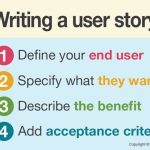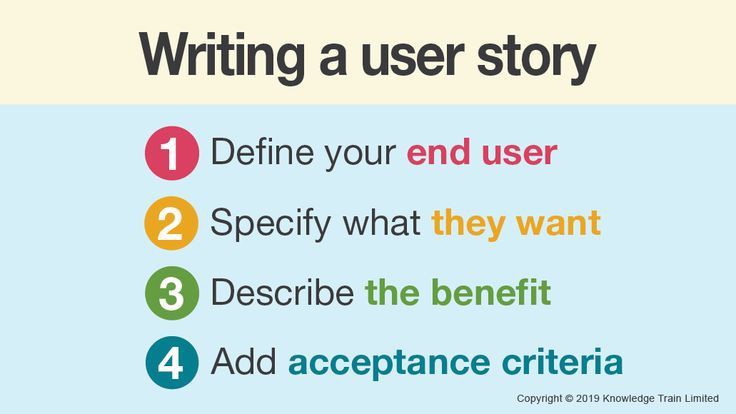Agile methodology has transformed software development by concentrating on cooperation, versatility and delivering value to users. One of the significant parts of Agile is the user story. User stories are an essential concept in Agile product development, serving as a brief and efficient way to acquire requirements from the user’s point of view.
They serve as the basic units of an Agile project, providing a user-centered perspective on what needs to be built. They also play a vital role in ensuring the development teams provide value-driven features and functionalities that meet the end users’ needs.
In this guide, we will explore user stories, how to write them effectively, their place within the Agile framework and clarify the difference between epics and user stories.
Table of Contents
What is a User Story?
A user story is a concise, casual explanation of a feature or functionality from an end user’s point of view. It is a basic unit in Agile development. They serve as a way to capture and communicate the specific criteria and expectations of end-users, stakeholders and the development team.
It typically follows a simple template. “As a [user type], I want [an action] so that [benefit/value].” For example, “As a customer, I want to be able to reset my password so that I can regain access to my account.” User stories are consciously concise and leave room for communication and cooperation. This format allows teams to organize their work based on user needs and guarantees a common understanding of what needs to be built.
The objective of a user story is to communicate the user’s needs and motivations, not to provide detailed specifications. This user-centric approach helps development teams stay focused on delivering value to the customer. These stories are typically written in simple, non-technical language and follow a specific template, which often includes three main components:
- Role: This describes the user or persona who will be using the feature
- Action: This outlines what the user wants to achieve or the problem they need to solve.
- Benefit: This explains the value or benefit the user will gain from the feature.
Read also: Agile Project Management: Why it is Good for Your Business.
User Story Template
User stories can be written using various templates, but the most common one is the one mentioned earlier. However, depending on the specific needs of your project, you might consider alternative templates like:
- “As a [user type], I can [do something] to [achieve a goal].” This template emphasizes the user’s action and goal.
- “In order to [achieve a benefit], as a [user type], I need [a feature].” This format places more emphasis on the desired feature and its purpose.
- “As a [user type], I should [observe something] when [a condition is met].” This template can be useful for testable acceptance criteria
Finally, the template choice depends on the context and what information needs to be delivered. The key is to keep the user at the center of the story.
Read also: Why UI Cannot Survive Without User Research.
Writing Better User Stories
Writing efficient user stories is important for successful Agile development. Here are some tips for creating better user stories:
-
It should be user-centered
Always focus on the user’s needs and goals. Understand their goals and motivations to write stories that provide real value. Avoid technical jargon and instead use plain language that a non-technical person can understand.
-
It should be value-oriented
Ensure that each user story provides clear value to the user. Ask yourself, “Why is this feature important to the user?”
-
It should be independent
User stories should be as autonomous as possible, meaning they should not overly rely on other stories. This allows for greater adaptability in organizing and executing features.
-
It should be negotiable
Be open to discussion and diplomacy. User stories are not contracts but living documents that can evolve as the team’s understanding improves.
-
Make it testable
Each user should have clear, testable acceptance criteria. Define the conditions for the user story to be considered complete. This helps confirm when the story is complete, clarifies the expectations and aids testing.
-
It should be sized appropriately
Avoid writing overly large stories. If a story is too big, consider breaking it into smaller, more manageable ones.
-
Avoid assumptions
It is essential to base user stories on actual user needs and not make assumptions. Talk to users, gather feedback and conduct user research to ensure you understand their requirements.
-
Estimate complexity
Teams often estimate the complexity of user stories, which helps in planning and organizing work. Common estimation techniques include story points or time-based estimates.
Read also: A Complete Guide to Technical Writing and How to Become a Technical Writer.
Difference Between Epics and User Stories
Epics and user stories are vital elements in Agile product development, but they serve different purposes and have unique characteristics. The key difference between these two lies in their scope and level of detail:
- Epics: Epics are larger, more high-level features or initiatives that often encompass multiple user stories. They represent big chunks of work that need to be broken down into smaller, more manageable user stories. Epics often lack the detail and specificity of user stories. For example, “implement a payment system” is an epic. It can be divided into user stories like “As a customer, I can enter my payment information” or “As a customer, I can select my payment method.”
- User Stories: User stories are smaller, detailed requirements that focus on a specific user’s needs. They are more manageable, testable and actionable. They provide the necessary details for developers to understand and implement a feature effectively. They are the building blocks of the product and are typically completed within a single sprint.
In summary, epics set the stage for a project, outlining significant areas of functionality, while user stories provide the actionable, incremental steps needed to realize the epic’s vision.
Join our WhatsApp community to access opportunities and resources that will aid your career growth.
Conclusion
User stories are the backbone of Agile development, offering a user-centered approach to defining requirements. Writing them effectively, following user-centric principles and understanding the distinction between epics and user stories are crucial for successful Agile product development.
Understanding the difference between user stories and epics is important in effectively managing and organizing work within an Agile framework. When used correctly, user stories can greatly enhance communication and collaboration among team members, resulting in a more efficient and user-focused development.
To stay updated on the latest happenings relating to Nigeria’s Tech space, Business, Entrepreneurship, Career growth and many more, subscribe to our newsletter now.
Edited by Oluwanifemi Akintomide.
About Author
- Aiyepe Ayishat is an author of several unpublished articles. She is mainly into writing and editing. In her free time, she likes to read, make motivating videos, obsess over music, practice new writing skills and watch movies. Aiyepe Ayishat resides in Lagos, Nigeria. She is currently studying Electronics and computer engineering in Lagos State University.
Latest entries

 TechnologyJanuary 12, 2024A Guide to User Stories in Agile Product Development
TechnologyJanuary 12, 2024A Guide to User Stories in Agile Product Development LifestyleOctober 14, 2023Using Google Calendar as a Productivity Booster in Work and Life
LifestyleOctober 14, 2023Using Google Calendar as a Productivity Booster in Work and Life CampusSeptember 25, 2023Exploring Cultural Diversity in Nigerian University Campuses
CampusSeptember 25, 2023Exploring Cultural Diversity in Nigerian University Campuses

